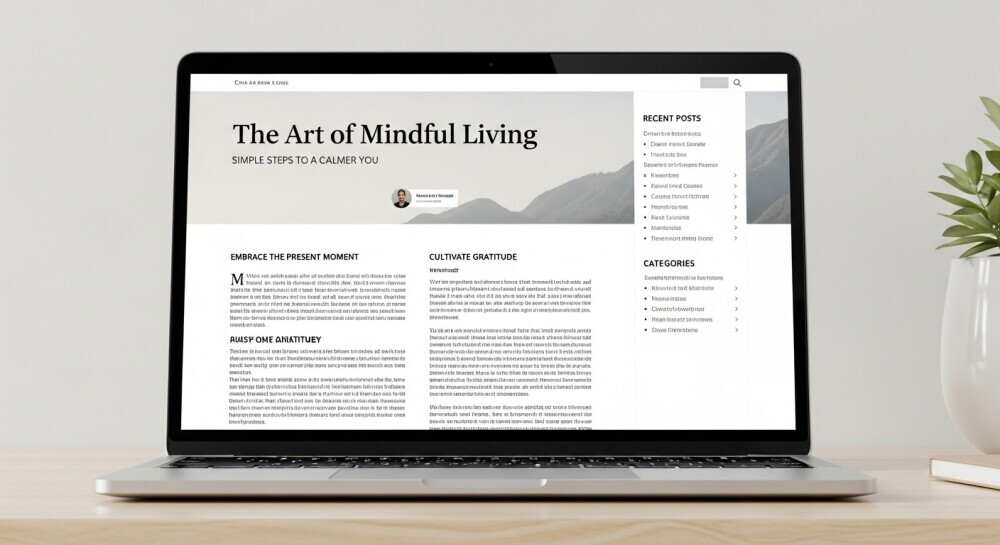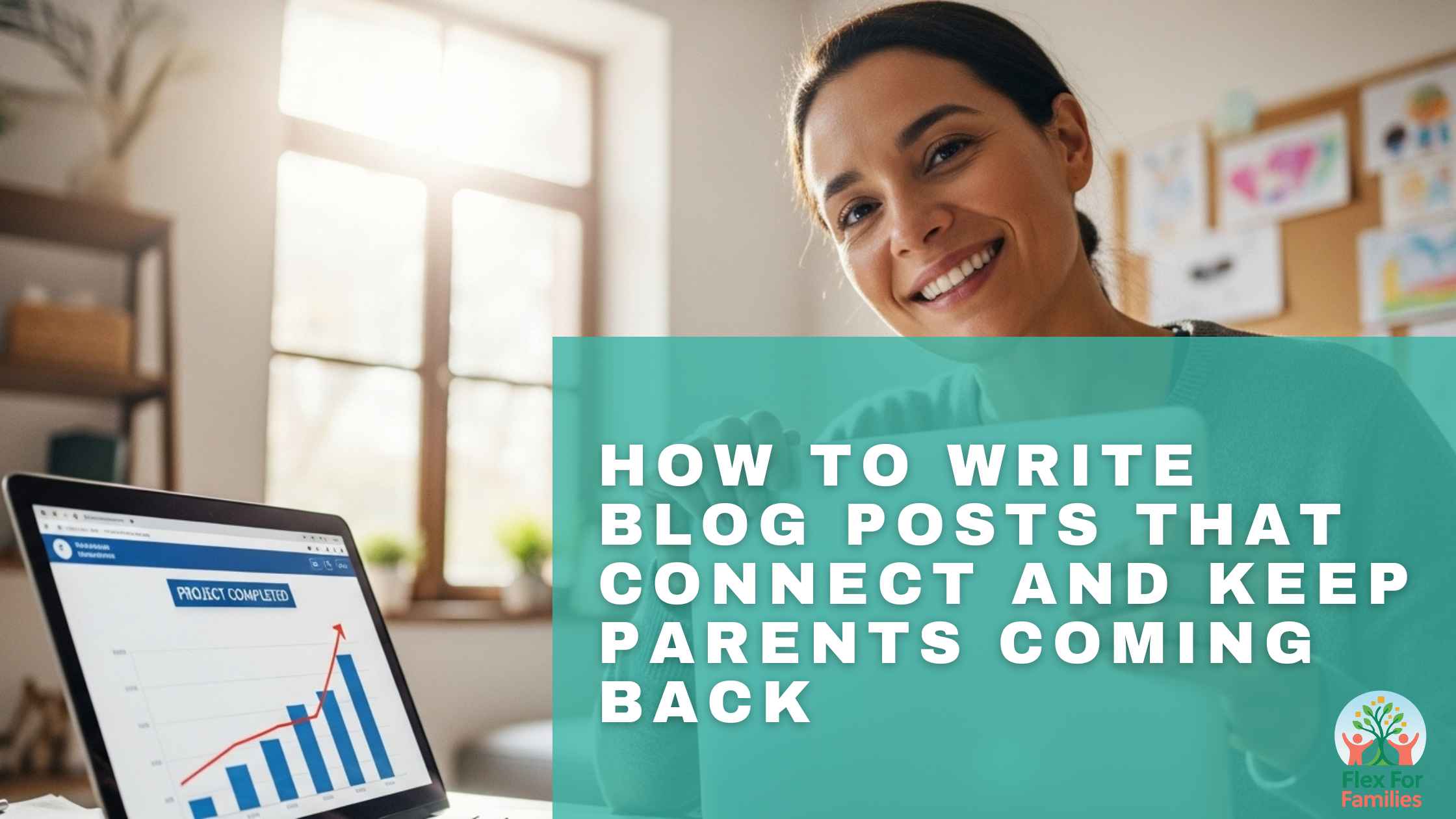Why Connection Matters More Than Perfect Writing
When I first started blogging, I thought every post had to sound polished. I’d edit endlessly, trying to make every sentence perfect. But the truth is, the posts that got the most comments weren’t flawless… They were honest.
Parents connect to what feels real. The messy moments, the small wins, the stories that sound like they came from someone who’s actually been there. That’s what makes a blog worth returning to.

Your readers aren’t expecting magazine-quality writing. They just want to feel seen. They want to read something that reminds them they’re not alone in trying to juggle everything at once.
So, instead of chasing “perfect,” focus on connection. When you write with warmth and honesty, parents remember you, and they’ll come back to hear what you say next.
If you haven’t already built a writing rhythm that fits your family, read How to Build a Simple Blogging Routine That Fits Family Life before this one. It’ll help you create space to write regularly without adding pressure.
Every parent blog starts somewhere. Here’s your roadmap through the Parent Blogging Success series — from your first post to building income that fits your family.
Step 1: Start With Real Stories
Every parent has stories that stick: the late-night feeds, the tantrums in the supermarket, or that small moment when your child said something that made the chaos feel worth it. Those stories are gold.
The best way to connect with your readers is to write from real experiences. You don’t need to share everything, but when you let readers see your genuine side, they’ll see themselves in your words.

Here’s how to start:
- Think about one moment this week that made you laugh or pause.
- Ask yourself what lesson, tip, or comfort another parent might take from it.
- Write it like you’re sharing it with a friend over coffee – not teaching a class.
The story doesn’t have to be dramatic. It just has to be true. Real stories give your blog personality and make readers feel like they know you.
If you’re still finding your blogging voice, my post Parenting Blog Niche Ideas: Find Your Voice and Connect With the Right Readers walks through how to shape your message so it feels natural and true to you.
Step 2: Focus on Helping, Not Impressing
It’s easy to get caught up worrying about sounding like an expert. But readers don’t come back because you know everything… They come back because you get them.
Your job isn’t to impress. It’s to help.
Write every post as if you’re talking to one friend who needs your advice or encouragement. Keep it simple, genuine, and focused on what would make their day easier.

Here’s a quick way to stay grounded:
- Before you write, picture one parent who might read your post.
- Ask, “What do they need right now?”
- Then write like you’re replying to their message.
If you stay focused on helping that one person, your tone will stay warm and natural. Readers will feel that connection, and they’ll trust you faster than if you tried to sound like an expert.
When I’m drafting, I use Google Docs or the SiteContent editor inside Wealthy Affiliate. Both keep the process simple and distraction-free. You can focus on writing, not fiddling with layouts or plugins.
Step 3: Make Every Post Easy to Read
Parents don’t read blog posts the way they read books. They scan between tasks, scroll while waiting for school pickup, or glance through a post while holding a toddler. That means your job is to make your content quick to absorb.

Here’s what helps:
- Use short paragraphs – three lines or less keeps things flowing.
- Add clear headers so readers can skip to what they need.
- Include bullet points for lists or quick steps.
- Highlight one key takeaway per section so it sticks.
Readable blogs are memorable blogs.
To polish your writing, tools like Grammarly or the Hemingway App catch small errors and help you simplify long sentences. Keep your language direct, warm, and conversational — that’s what draws parents in and keeps them reading.
If you’d like more help setting up an easy, clean blog layout that supports your writing, take a look at The Best Blogging Tools for Parents Who Want Simplicity and Sanity. It walks you through the exact tools that make formatting and visuals stress-free.
Step 4: Add a Personal Touch to Every Post
The difference between a blog that gets skimmed and a blog that gets remembered is personality.
Readers come back for you… Your honesty, your quirks, your take on things.
You don’t need to overshare to be personal. Just sprinkle in the small details that make your life real. Talk about how you sneak in writing time during nap breaks, how you manage screen time battles, or how you handle that daily chaos we all know too well.

Here’s what works:
- Use “I” and “you” often – it makes posts feel conversational.
- Share examples from your real life to make lessons relatable.
- Mention your small wins and honest struggles.
Adding your voice is what builds loyalty. Parents want to read from someone who’s walking the same road they are… Not someone trying to look perfect.
If you want your posts to look as good as they sound, Canva is your best friend. Create quick quote graphics, blog headers, or story highlights that match your brand without taking hours to design.
Step 5: End Every Post With a Conversation
Connection doesn’t stop when the post ends… That’s where it starts.
When you finish writing, always invite readers to join the conversation. Ask questions that make them want to share their own experiences or challenges.
You don’t need a complicated formula. Just be curious and kind.

Here are examples that work well:
- “What’s worked best for you when it comes to managing family chaos?”
- “Which part of your routine helps you stay sane during busy weeks?”
- “What’s one parenting moment you’d turn into a blog post?”
Add a short “Let’s Chat” block at the bottom of your posts so readers know you’re listening. It turns readers into community members and keeps them coming back.
If you want to learn how to manage comments and engagement without feeling overwhelmed, check out Balancing Parenting and Blogging: Simple Time-Saving Habits That Work – it shows how to stay active in your blog community even with limited time.
Common Questions: FAQ
How long should my blog posts be?
Long enough to answer your reader’s question, but not so long that you lose focus.
Most parent bloggers find 1,000–1,500 words is the sweet spot.
Shorter posts can work too – what matters is value, not word count.
How personal should I get in my posts?
Stay honest, but keep some things private.
Your goal is to share stories that help or comfort others, not to post your entire diary.
If it teaches, connects, or encourages, it’s worth including.
What if no one comments?
Don’t worry – many readers engage quietly.
Comments often come after trust builds over time.
Stay consistent, invite conversation, and use your email list or social posts to spark replies.
How can I make my posts more engaging?
Ask questions, use real examples, and break up text with subheadings or visuals.
Think about how your reader feels as they scroll – and speak to that feeling directly.
Conclusion: Connection Builds Community
You don’t need to write like a pro to make an impact. You just need to write like you.
Every parent has stories that matter — the wins, the frustrations, the everyday chaos that make your blog human. When you share from the heart, readers will see themselves in your words.

The connection you create through honesty and empathy is what keeps people coming back.
It’s not about chasing clicks… It’s about building a community that grows with you.
If you’re ready for feedback, post templates, and encouragement from other parents who understand your world, the Parent Blogging Hub is your next step.
Let’s Chat
What makes a blog post connect with you the most? Honesty, tips, or stories that make you feel seen?
Drop a comment below and share your thoughts. I read everyone.
Your feedback helps shape future posts and keeps our community conversations growing.




